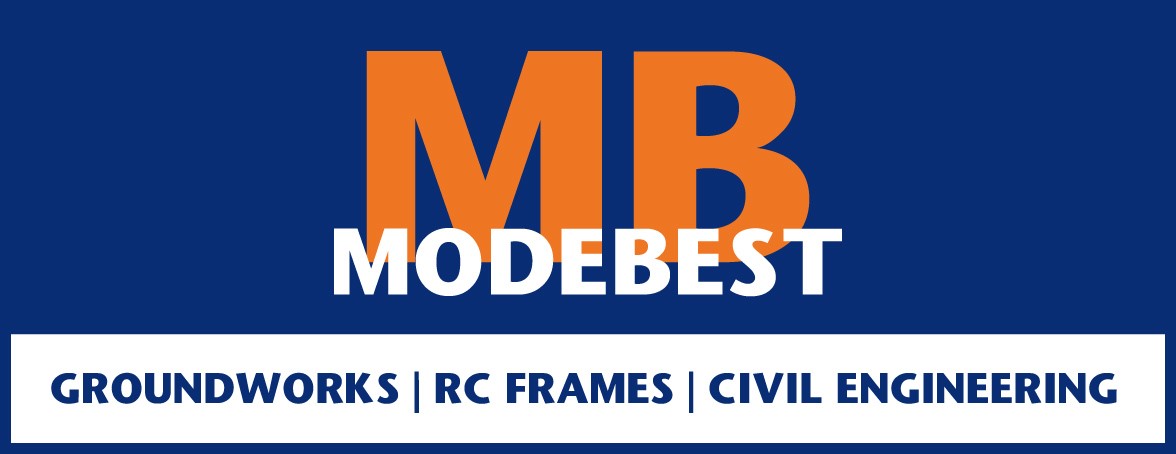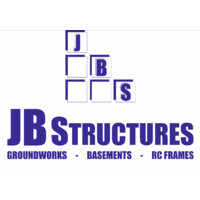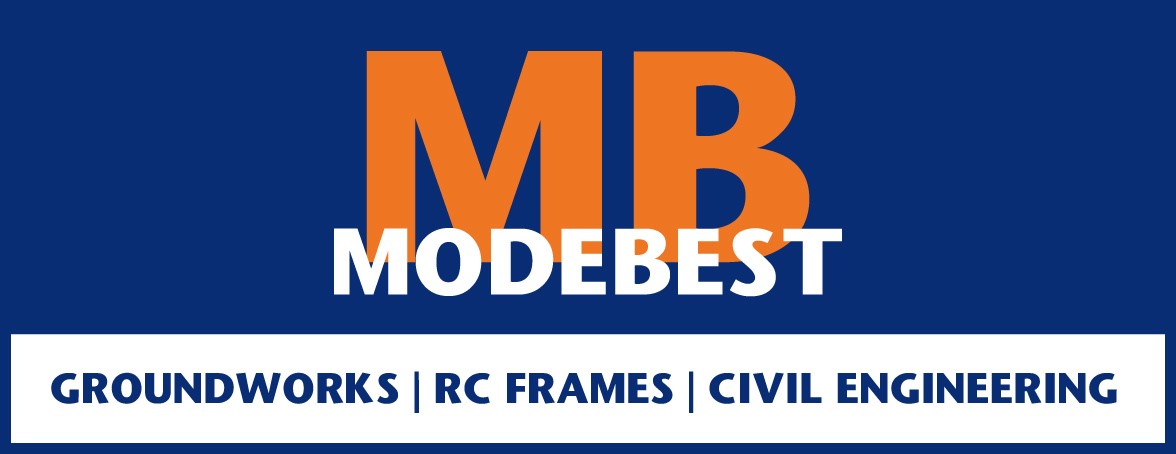Information
-
Audit Title
-
Document No.
-
Client / Site
-
Conducted on
-
Prepared by
-
Location
-
Personnel
Before Construction Works Commences On-Site For Any Temporary Works
-
For all construction projects a Temporary Work Co-ordinator has to be appointed before construction works commences. All ensure that the appointments are made in writing from form Temporary Works Appointment of TWC (TW01)
-
Has a Temporary Works Register been issued to the site manager. Refer to form Temporary Works Register. (TW02)
-
Has a temporary works design brief been prepared, which included drawings, calculations and specifications. All ensure that a Temporary Works Design Brief (TW03) is completed and submitted before construction take place, with a Temporary Works Design Check Certificate (TW04). Therefore refer to Temporary Works Design Brief. (TWDB) (TW03). And has the Temporary Works Design Brief information been forwarded to the Temporary Works Engineering Departments for review. (TW03)
-
Has a Temporary Works Design Check Certificate been approved, by the Temporary Works Engineer. Therefore, refer to a form, which should be issued as Temporary Works Design Check Certificate (TW04)
-
Has all the temporary work stages sequences have been completed from TW01 to TW04. Also ensure that the Temporary Works are installed as per the design in the sequence specified to method statement, specification and drawing. If so issue then a Permit to Load/Strike/Dismantle Certificate TW05
Classification of Temporary Works
-
Category 0: Basic Construction Methods. Restricted to standard solutions only for site condition
-
Category 1: Routine Construction Methods. For simple designs, such as formwork/false and needling/ propping to opening support one storey high.
-
Category 2: Specialist Construction Method: Complex designs for excavations,foundations, structural steelwork,needling/propping scheme and reinforced concrete.
-
Category 3 : Unusual and Bespoke Construction Method. For complex designs which results in complex sequences of moving and/or construction of either temporary works or permanents works.
Excavation/Trench Category
-
Category 0: Shallow trenches less than 1200mm in depth in good ground conditions.
-
Category 1: Trench excavations up to 3 metres deep in good ground conditions. Refer to pits and trenches to CIRIA 97 trenching practice
-
Category 2: Open cut excavations greater than 3m deep (Geotechnical advice should be considered.
-
Category 2: Trenchless construction including headings, thrust bores, and mini tunnels.
-
Category 3 : Open cut excavation greater than 6 metres deep (geotechnical advise should be sought over 3 meter depth)
-
Category 3 : Excavations and cofferdams in tidal conditions
-
Category 3: Excavations and cofferdams in poor ground conditions
-
Check that excavations supports/ trench depth between 1m and 6m have structural members supports such as sheet piles ,steel walers, and flying shoring. This should be checked in accordance to the design drawings from Groundforce, MGF or Maybe.
-
Check that the design excavation drawings have certifications for a Temporary Work Design Check Certificate (TW04) and have been checked to updated drawing from Groundforce, MGF or Maybe.
-
Check that there are appropriate protective groundwork excavation/systems in place to prevent persons falling more than two metres and falling objects.
Formwork/Falsework Category
-
Category 0 : Formwork less than 1200mm in height
-
Category 0 : Formwork at ground level/excavation level max 2.4m double sided.
-
Category 0:(Formwork propping) For simple propping schemes, one or two props, less than 1.2m high are acceptable.
-
Category 1 : Double sided formwork with access platforms at ground level. Refer to O'Shea or Peri drawings
-
Category 1 :Single sided formwork to 2.4m. Refer to O'Shea & Peri drawings
-
Category 1:Routine formwork/false-work at not more than 6m height, slabs not exceeding 500mm thick, beams not exceeding 1m width 1.5m depth. Refer to O'Shea & Peri drawings
-
Category 1: Permanent false-work (e.g metal decking profile)
-
Category 2: Falsework & formwork over 3m high. Refer to O'Shea and Peri drawings
-
Category 3 :Slipform formwork design
-
Check that props are the correct grade and type supporting the formwork, from the Peri or O'Shea drawings.
-
Category 3 :All permanent formwork (metal decking,omina planks etc)
-
Pre-pour formwork inspections and certification records.
-
Formwork, False work and /or scaffold inspection checklists and records.
-
Pre-pour formwork inspection and certification records in accordance with design detail (engineers drawings) and relevant standards.
-
Formwork, back-propping, tilt-up bracing and/or scaffold inspection checklist and records.
-
Concrete pour inspection and monitoring records.
-
Formwork and back propping is designed and specified in accordance with BS5975 and formwork engineer drawing from Peri or O'Shea has been checked by the Temporary Works Engineer with updated drawings and have been issued with a Temporary Work Design Check Certificate. (TW04)
-
Checking system is in place to ensure that there is a nominal 10mm gap between the intermediate packing/support and spreading beams, after installing the formwork and reinforcement and prior to concreting.
-
Check that the formwork is set out and positioned as per the drawing.
-
The formwork should be installed and lifted as per the SGB/O'Shea/Peri recommendations, drawings and specifications.
-
Check that GASS or similar leg under the DU-AL system should be laterally restrained in both by direction by tying into the adjacent frame with tube and fittings.
-
Check that beam side shutters have been installed correctly. And for the down stand beams or the steps in slab.
-
Check must be ensure that all the secondaries are connected to the primaries and the primaries to GASS frame or similar, with proprietary fixings.
Slipform Formwork Category
-
Category 3 : Slipform
-
Check that the Slipform formwork is set out and positioned as per the drawing
-
The slipform system should be installed and lift as per the SGB/O'Shea/Peri recommendations, drawings and specification.
-
Check the slipform system, that there is a 10mm gap between the intermediate packing/support and spreading beams/frames after installing the formwork & reinforcement & prior to concreting.
Ground Work supports/ Needles/Propping Scheme Category
-
Category 0: For simple propping schemes, one or two props, less than 1.2m high are acceptable.
-
Category 1:Trench excavations up to 3 metres deep in good ground conditions. Refer to pits and trenches to CIRIA 97 trenching practice
-
Category 2: Ground support scheme greater than 3 metres deep, should include sheet piling and proprietary support systems.
-
Category 2: All ground support scheme in poor ground conditions
-
Category 2 :Permanent ground systems( contiguous/secant/diaphragm walls) in temporary conditions
-
Category 2: Needling of structures greater than two storey's high.
-
Category 2 : Complex propping schemes- multiple props and multiple levels
-
Category 3:Structural refurbishment (including needling and propping)
-
Category 3:Large basement excavation and propping schemes
-
Back-propping, tilt-up bracing and/or scaffold inspection checklist and records.
-
Check for temporary bracing system is installed correctly to the drawings from Groundforce or MGF
-
Back propping/needling scheme is designed and specified in accordance with BS5975 and drawing scheme from RMD or Maybe . Needling and propping members to be checked according to the drawings on-site erection.
-
Check that the groundwork support design excavation drawings have certifications for a Temporary Work Design Check Certificate (TW04) and have been checked to updated drawing from Groundforce, MGF or Maybe.
-
Check that there are appropriate protective groundwork support excavation/systems in place to prevent persons falling more than two metres and falling objects
-
Check that the mitigate and risk associated with temporary work support members for needling and propping scheme is carried out accordance to the drawings and method statement.
-
Ensure all steel sections, props are of the correct grade as specified in the drawing.
-
Check that the use acrow props has a 100x 100 timber packer on top.
-
Ensure all steel sections have been installed correctly as per drawing for steel connections
-
Ensure all nuts, bolts, washer plates are in place and securely fastened.
-
Ensure all welds have been installed correctly as per the Temporary Works design
-
Ensure all chemical fixings and grouting are of the grade specified in the drawing.
Hoarding & Fencing/Signboards Category
-
Category 0:Internal hoarding system and temporary partitions not subjective to wind or differential air pressure or crowd loading.
-
Category 1:Fencing and hoarding up to 2 metres in height
-
Category 2: Fencing and hoarding over 3m high
-
Category 2: All site signboards, over 2m height
-
Have Hoarding/Fencing been established to protect people where the structure adjoins a public/client area.
-
Have hoarding & fencing update drawings and plans, been checked and approved with a Temporary Work Design Check Certificate. (TW04)
Safety Netting System Category
-
Category 1:Safety net systems installed in accordance with manufacturers recommendations and which are fixed to robust primary steel members
-
Category 3: Safety net systems which are not fixed to robust primary members. (e.g cold formed sections) or are of any unusual design
-
Site should ensure that there is a safe method of working to install the nets and the system is installed as per the Tamment or Similar User instruction
-
The Tammet safety net or similar should be installed with the brackets and support tubing at a maximum 4.3m or a minimum 3.3m centres, fixed to the slab soffit with a Hilti M16X65 HKD socket anchor, with M16. Site should that a minimum 180mm edge distance to the anchor.
Scaffolding Category
-
Category 0: For standard scaffold design, refer to TG20:13 Design Guide
-
Category 0: Free standing access tower erected and used in accordance with the manufacturers recommendations
-
Category 2:To cover all complex designed scaffold structures
-
Category 2 : All sheeted scaffold irrespective of height (includes debris netting).
-
Category 3: All scaffolds whose top is in excess of 15m above ground level and all other designed scaffolds such as cantilever or hanging scaffold etc.
-
Check scaffold inspection checklist and records.
-
Check design drawings and certification in accordance with design and relevant standards, including, TG20: 13 scaffolding design guidance, that the Temporary Work Engineer has issued a Temporary Work Design Check Certificate. (TW04)
Edge Protection Category
-
Category 2: Edge protection to roof and slabs.
-
Check that edge protection should be provided on the proposed upper concrete floors structures, to prevent falling objects and secure safety for work operatives against falling prevention
-
Check that edge protection such as Shoreguard or similar protection system is at 2m centres with tube and fitting handrail, installed against a yard edge.
-
Check that the handrail are continuous with sleeve coupler and the Shoreguard system installed as per manufacturers standard details and users guides
-
Check that toeboard is installed at ground level edge at 150mm height
-
If or no upstand present on floor/roof slab, then the edge protection should be installed a minimum 500mm back from the roof/floor edge.
-
The height of the edge protection should be of 1000mm high, with the handrails positioned at 470mm c/c vertical.
-
Check that KGuard/ Combis similar edge protection, with post fixed socket bases at a maximum 2.4m centre and a minimum 200mm edge distance
-
The KGuard/combis system is installed as per manufacturer's standard details and guidelines and particularly insuring M16 expanding anchors are drilled and set correctly with the top of slab
Mobile Cranes and Plant Equipment Category
-
Category 0:Small MEWP operating on a pavement designed for HGVs or on internal concrete ground bearing slabs and working within the level tolerances set by the manufactures.
-
Category 1 :Mobile crane outrigger foundations in good ground conditions, crane not more than 50 tonne.
-
Category 1:Mobile concrete pump with outriggers foundations in good ground condition and with good access
-
Category 2:Piling and crane platforms: for outrigger support foundations in good ground conditions ,which crane exceeds 50 tonnes
-
Category 3:Crane lift for rail gantries ,bridgework, structural frames etc. (Lift plans, crane foundations etc)
-
Check the loading calculations take into account machinery/plant loading on existing ground conditions and upper concrete floor slabs on the concrete building structure.
Tower Crane Base Category
-
Category 2: All tower crane bases
-
Category 3:Complex or suspended tower crane bases
Piling Rig Plant Category
-
Category 2: Working platforms for piling rigs and cranes
-
Category 3:Pile mats on poor ground (soft clay & loose materials)
-
Check that loading calculations take into account for plant piling rig loading onto the piling matt
Demolition Category
-
Category 2: Demolition (Method Statement)
-
Category 3:Complex building demolition
-
Category 3 : Partial demolition or modification of existing structures
-
Category 3 : Bridge demolition
-
Is there a demolition construction plan which identifies all hazards relating to this work task, and assigns risks and controls to each identified hazard.
-
Is there a demolition or Project Safety Plan identifies hazards in relation to structural alterations and temporary support structures Eg propping, wall retention or shoring/bracing
Temporary Flying Shores/Bracing Category
-
Category 2: Flying/Bracing and raking shores
-
Category 3 : Complex Flying/Bracing and raking shores
-
Check that temporary bracing, shoring or propping is inspected on a regular basis to ensure tight, stable and secure.
-
Check that shoring/bracing or flying supports have been provided for existing adjoining buildings, proposed new floors or new retaining walls
Concrete Foundation Category
-
Concrete foundation underpinning not using piles.
-
Check that the good conditions are adequate to support the concrete foundation, with a site investigation report and Temporary Work Design Check Certificate (TW04) from the Temporary Work Engineer.
Lifting Equipment Category
-
Category 1:Use of standard components to catalogue design
-
Category 2: Designed lifting equipment such as hoists and mast climbers
-
Category 3:Components used as part of a crane or other mechanical equipment
-
Check that hoist is tied into floor slab at each levels floor i.e. 1,4,7,10,13 & roof slabs with a proprietary fixing plate or anchor bolts.
-
Check that hoist is fixed with a outrigger at ground level or fixed onto the concrete foundation slab base.
Existing and Proposed Steelwork Support Façade Category
-
Category 2 :Simple façade retention schemes
-
Category 3:Complex façade retention schemes
Ground water encounter on-site Category
-
Category 2:De-watering and ground water control other than slump pumping
-
Category 3:Pressure pipework testing
Jacking Scheme Category
-
Category 3 : Jacking Scheme
-
Routine stress cases in the permanent works resulting from temporary conditions.
Bridge Scheme Category
-
Category 3 :Bridge erection schemes (Stability checks)
-
Category 2:Simple Bridge erection schemes
Building Construction Conditions Category
-
Category 3 : Unusual designs
-
Category 3 :Assessment of structures likely to be effected by settlement or vibration caused by the method of works.
-
Category 3: Abnormal stress cases in the permanent work resulting from temporary conditions.
-
Category 3:Temporary works combining interacting or multiple designs
-
Check on-site if these is any stress cases or cracking patterns in the permanent works, which could result in temporary work support conditions for steels propping system. Therefore refer to the Temporary Work Engineer for advise.
-
Check that the building structure and materials have been considered prior to starting the alterations to the structure.
Temporary Work Inspection Checklist for General Procedure in Checking Falsework on-site
-
When the proposed founding level for the falsework is in preparation
-
When the falsework has attained a height of 10m or a height equal to 1.5 times the minimum of its plan dimensions.
-
When the falsework reaches its support level.
-
Check at intermediate stages, when the strength or stability of the falsework may have been adversely affected by environmental or other loading conditions or unauthorized interference.
-
Where equipment is being continually re-used and periodic checks are appropriate.
-
Immediately prior to loads being applied.
-
All falsework drawings should be checked and approved before construction works starts.
-
Only the correct materials specified on the falsework drawing should be used.
Founding Level for Falsework at Ground Level Check List on-site
-
The setting out is correct on the drawing
-
The ground has been adequately prepared and is at a satisfactory level.
-
Suitable sole plates or other base have been properly levelled.
-
Sole plates or other bases have not settled.
-
Sole plates have been properly bedded down.
-
Any chocks or other supports are the correct shape and are adequately connected to the falsework structure.
-
Baseplate have been used and are properly spaced and centred on the sole plates.
-
The extension of each screw or adjustable base is within the permitted limits, and braced if necessary.
Falsework Check List above the Ground Level
-
Ties and/or rakers have been fitted.linking all uprights in two directions roughly normal to each other, or at specified skew angle.
-
Check upright members are plumb
-
Check joints in vertical members are properly butted and aligned.
-
Check the spacing and level of each lift of lacing members are correct.
-
Check the number and position of all bracing members are correct according to the drawing.
-
Check that the restraints are effective where the falsework is stabilized by butting, wedging or tying lacing members or bracing.
-
Check forkhead are properly aligned, and braced where necessary.
-
Check bearer are correctly spliced, centralized in the forkhead.
-
Check beams ,including floor centres, have adequate seatings, and are secured against movement.
-
Check all pins, bolts and clips have been fitted of the correct type and are secure
-
Check scaffold couplers are properly tightened
-
Check that falsework has top restraint with a fixed head.
Temporary Work Inspection Checklist for Formwork
-
Check that all wall formwork panels are secure either by propping/clamps/through bolts during the erection and dismantling, following the sequence set out in the method statement.
-
Check that the Vario wall shutters are installed as per the drawing either Peri or O'Shea.
-
Check that girder beams are at the maximum centres according to the drawings from O'Shea or Peri
-
Check that propping supports around the columns, and wall formwork, that all legs propping are laterally restrained at top and bottom in both direction.
-
Check the pour rate of concrete for formwork shuttering is no more than 2m/hour for 15mm diameter tie place at 1m c/c vertically and 2.4m c/c horizontally. However, if the pour height exceed for the shuttering height then use 20mm rod tie for all.
-
Check that the max design concrete pressure of 50kn/m2 is not exceeded on-site. Un-less specified by the drawings either Peri or O'Shea.
-
Check the concrete pressure on the formwork, should be a maximum rate of rise of concrete shall be 1.5m/hr at 15 degree. Refer to drawings and specification either from Peri or O'Shea
-
Check that facing shuttering panels should be connected by screws or clumps.
-
Check the shuttering stop end panel shall be connected to the facing panel by screws at the return corners.
-
Check that all formwork panels and the bottom layer of prop shall be tie down as the detail indicate on the Peri or O'Shea drawing.
-
Check that shuttering panel is to be installed against 100mm kicker.
-











